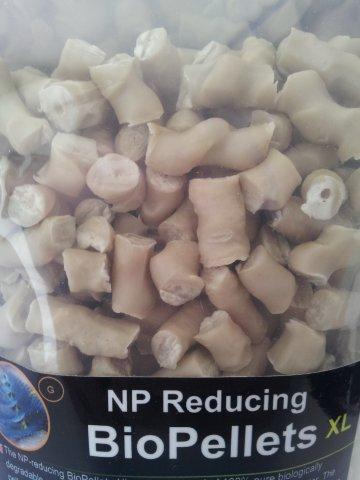XL BioPellets are getting supersized into jumbo Bio-Bones that are so big and heavy that they don’t need to be fluidized, and therefore fit right into any kind of canister filter or compartment. Being much much larger than the previous generation of small and slightly buoyant biopellets, the new BioPellet XL are described as “a porous piece of bone”.
So the ‘Bio-Bone’ biopellets are now approximatley the same size as Reborn-style coral-bones used in calcium reactors, meaning that they have a smaller surface area which is slightly offset by their porosity. Now instead of fluidizing or tumbling them, we have the option of sticking BioPellets XL into any old canister filter or media chamber with lots of water flow.
Whether the new BioPellet XL has some advantage in water treatment use or whether it’s just a larger billet size for molding biodegradable plastics remains to be seen. The Bio-Bones are strictly being produced by the “original” NP Reducing BioPellets so the BioPellets XL will be an exclusive product to Aquarium Specialty in North America.
Judging from the pictures the new BioPellets XL looks like caramel chews for people or rawhide chews for dogs, but hopefully they’ll be msot desirable as a food source for bacteria to chew through organics and deliver them unto the protein skimmer. We’ve remained of the opinion that the current grain size of most biopellets is somewhat small and the larger surface area reacts ‘too quickly’ in our own aquarium setups. Perhaps the larger BioPellet XL will be slower to come online biologically, and easier to handle in an aquarium water treatment application.
NEW ! NP Reducing BioPellets XL
Now available, the new NP Reducing BioPellets XL. These pellets are much larger than the ones we started with. These XL BioPellets do not need to be fitted in a fluidized reactor nor need to be fluidized. Due to the shape of the pellets they can be fitted perfectly in to a canister filter. This is ideal for the smaller plug and play aquariums where there is no space for a reactor, or aquariums without a sump. Also for larger systems this can be a benefit because you don’t lose space for the pellets to fluidize. You still need a high flow through.





